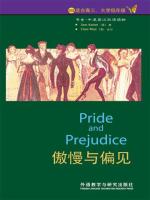3
用户737403
Pride and Prejudice by Jane Austen, first published in 1813, is one of
the most beloved and influential novels in English literature. It
remains highly regarded for its keen social commentary, vivid
characterizations, and its exploration of themes such as love, marriage,
social class, and personal growth. Set in the rural English countryside
during the Regency era, the novel follows the headstrong Elizabeth
Bennet as she navigates the complex world of relationships, societal
expectations, and personal biases. Here’s an evaluation of the novel
from several key aspects: 1. Character Development and Psychological
Depth One of the most enduring strengths of Pride and Prejudice is its
rich character development. Austen masterfully creates characters who
are multifaceted and whose personal growth forms the backbone of the
narrative. Elizabeth Bennet: As the novel’s protagonist, Elizabeth
is known for her intelligence, wit, and independent spirit. Her refusal
to conform to societal expectations of women—particularly in the context
of marriage—makes her an appealing and modern character. She is sharp,
observant, and quick to judge, often based on first impressions. Her
journey throughout the novel is one of self-reflection and growth, as
she learns to overcome her prejudices and recognize the true nature of
those around her, especially Mr. Darcy. Mr. Darcy: At first glance,
Mr. Darcy appears to be the epitome of a proud, aloof aristocrat, but as
the story unfolds, his character deepens. His initial reserve and
seeming disdain for those of lower social standing make him a figure of
criticism, but through his actions and internal transformations, he
reveals layers of vulnerability, integrity, and devotion. His character
arc, from haughty pride to humble love, mirrors the novel's exploration
of the dangers of misjudgment and the importance of self-awareness. The
evolving relationship between Elizabeth and Darcy is one of the most
compelling in literature. Both characters must confront their own
flaws—Elizabeth with her tendency to judge too quickly and Darcy with
his initial pride—and their eventual union represents the triumph of
mutual respect and understanding over first impressions and societal
expectations. 2. Themes of Love, Marriage, and Social Class Pride and
Prejudice is more than just a romantic novel. Austen uses the
relationships between characters to explore broader societal issues,
particularly the institution of marriage and its connection to social
class, wealth, and personal fulfillment. Marriage as a Social
Necessity: In the novel, marriage is often depicted as a practical
arrangement rather than a purely romantic ideal. This is especially
evident in the relationship between Mr. Collins and Charlotte Lucas. Mr.
Collins proposes to Elizabeth out of a sense of duty, while Charlotte
accepts his proposal for the financial security it provides, showing how
marriage during this period was often dictated by societal pressures and
economic necessity. Love vs. Social Status: Elizabeth and Darcy’s
evolving relationship highlights the tension between love and social
status. While Darcy initially considers marriage to Elizabeth beneath
him due to her family’s lower status, Elizabeth is equally prejudiced
against him because of his wealth and apparent arrogance. Their eventual
union suggests Austen’s critique of a society that prioritizes wealth
and class over mutual affection and respect. Ultimately, the novel
champions the idea that love and respect should be the primary basis for
marriage, rather than financial considerations or social expectations.



 京公网安备 11010802032529号
京公网安备 11010802032529号